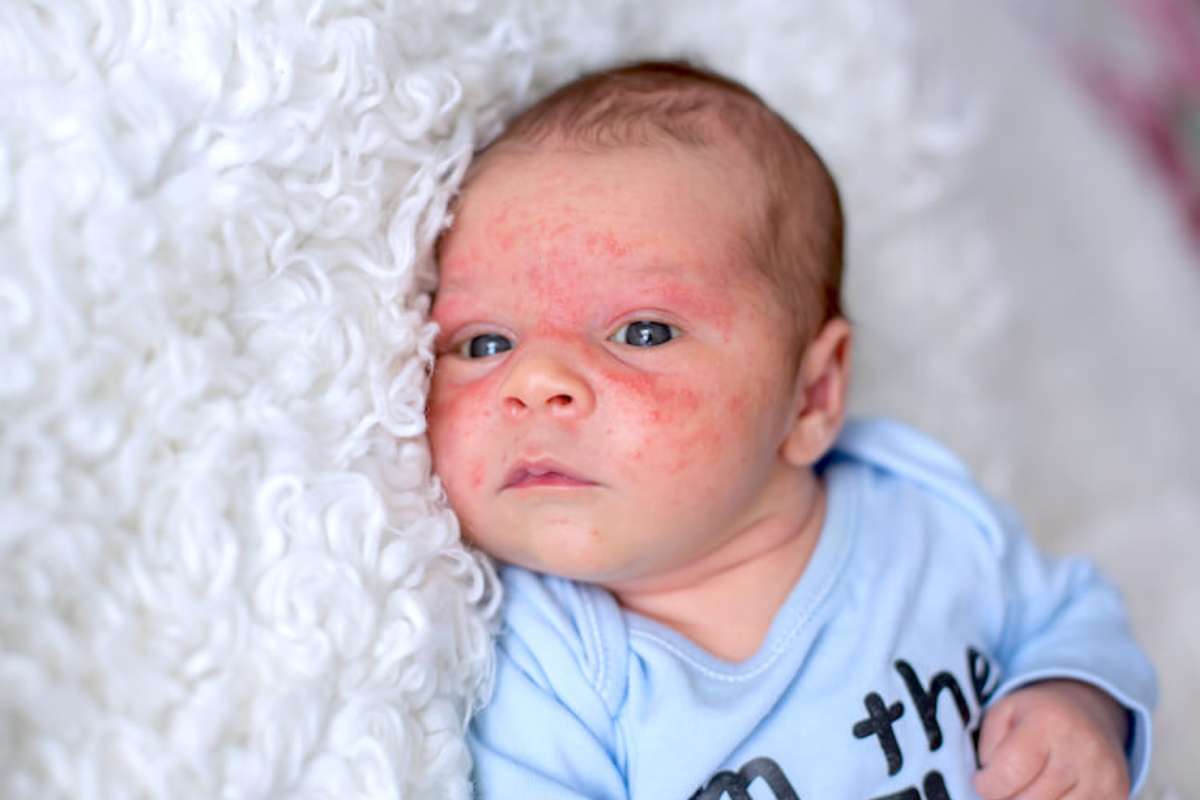What to Know If You Have a Milk Protein Allergy?
What to Know If You Have a Milk Protein Allergy?
Blog Article
What to Know If You Have a Milk Protein Allergy?

- Source: in.pinterest.com
Have you ever noticed a baby suddenly become fussy, break out in a rash, or experience digestive issues after having formula? Or maybe you’ve seen a toddler cry after drinking a glass of milk, only to have hives show up minutes later? For many families, this isn’t just a random reaction. It could be a sign of a milk protein allergy.
Though it sounds similar to lactose intolerance, an allergy is an entirely different condition. While it’s more common in infants and young children, adults can experience it, too. It’s not about struggling to digest milk, it’s about your immune system reacting strongly to the proteins in it as if they’re harmful invaders.
This blog breaks down what milk protein allergy is, how it affects everyday life, and what you can do to manage people’s diets.
So, What Exactly Is Milk Protein Allergy?
Milk contains two main proteins: casein and whey. When someone has an allergy caused by milk protein, their immune system mistakes these proteins as dangerous, triggering an allergic reaction. This can range from mild skin irritation to more serious symptoms like vomiting or trouble breathing.
In the U.S., this allergy is more common in infants, especially those fed cow’s milk formula. Thankfully, many children outgrow it by age three to five, but until then, it requires careful attention.
Why Do We Sleep on Milk, Figuratively Speaking?
Okay, maybe not literally sleep on it, but dairy plays such a central role in many American meals. From mac and cheese to morning lattes, milk is often an automatic go-to. That’s why milk protein can feel overwhelming at first. It hides in everyday foods, from crackers to baked goods. So, for anyone with an allergy, a simple snack can turn into a stressful moment. You’re constantly scanning labels, asking waiters about ingredients, or explaining to daycare staff why your child can’t have that cup of milk.
➤ Common Signs You Might Be Dealing with an Allergy Caused by Milk Protein

➤ For babies and toddlers, symptoms might look like:
- Constant crying after feeding
- Diarrhea or mucus in the stool
- Skin rashes or hives
- Vomiting or signs of reflux
- Breathing trouble or wheezing
What’s the Difference Between Milk Protein Allergy and Lactose Intolerance?
It’s a common mix-up. But here’s the thing: milk protein causes allergy due to an immune response, while lactose intolerance happens when your body lacks the enzyme to digest lactose (milk sugar). People with lactose intolerance may feel bloated or gassy after consuming dairy, but it doesn’t involve the immune system. Milk protein allergies, on the other hand, can be much more severe and require complete dairy avoidance.
➤ The Hidden Risks and Side Effects:
Living with milk protein allergy means more than just saying no to milk. Since dairy is often used in processed foods, it hides under names like caseinate, whey powder, and lactoglobulin. Accidentally consuming even a small amount can cause reactions, especially for children with severe allergies.
Besides the physical symptoms, there are emotional and social side effects, too. Kids with the allergy might feel left out at birthday parties or school lunches. Parents might feel anxious about introducing new foods. And adults with the allergy often find it frustrating when people downplay it or confuse it with food preferences.
Also, if you’re avoiding dairy long-term, you need to make sure you’re still getting enough calcium, vitamin D, and protein all things that milk usually provides. A dietitian can help build a plan that keeps your nutrition balanced without dairy.
Can There Be Benefits to Cutting Out Dairy?

Many people discover better digestion, fewer breakouts, and more energy when they go dairy-free, even if they’re not allergic. But for someone with a milk protein allergy, these alternatives aren’t just trends, they’re lifesavers.
Is This Allergy Age-Specific?
It’s mostly diagnosed in infants and young children. In fact, around 2–3% of babies in the U.S. are affected by milk protein allergy. The good news? Most of them outgrow it by early childhood, especially by age 5.
However, for some, it continues into adolescence or even adulthood. Adult-onset milk protein allergy is rare but not impossible. If you’re experiencing strange reactions to dairy and have ruled out lactose intolerance, it’s worth talking to an allergist.
The approach to managing it also varies with age. For babies, parents must rely on hypoallergenic formulas or breastfeeding with a dairy-free diet. For school-aged kids, it becomes more about education and communication — teaching them to speak up about their allergy. For adults, it’s about label-reading, restaurant awareness, and finding replacements that still feel satisfying.
How to Manage It Without Feeling Overwhelmed?

➤ Here are a few things that help:
- Always read ingredient labels — even on snacks you’ve bought before.
- Keep dairy-free snacks on hand so you’re never stuck.
- Talk to schools, caregivers, and friends so they understand the allergy.
- Find community support groups online — they’re full of tips and meal ideas.
- Try new non-dairy products. Many brands in the U.S. are now focused on allergy-friendly foods.
Conclusion
While managing a milk protein allergy can feel tough at first, it’s entirely doable with the right information and support. Whether you’re caring for a baby who can’t handle cow’s milk or you’re an adult suddenly noticing strange symptoms after your morning latte, awareness is key.
Thankfully, food choices in the U.S. are becoming more inclusive than ever. With a growing range of dairy-free options, managing milk protein allergy has become more practical and a little less daunting.
The goal isn’t just avoiding the allergy, it’s living fully and confidently in spite of it. And that? That’s something to raise your glass (of oat milk) to.